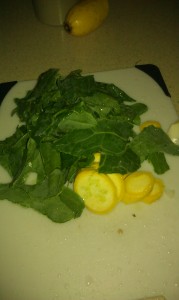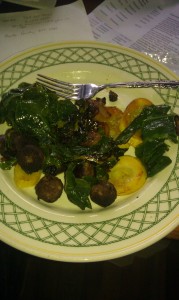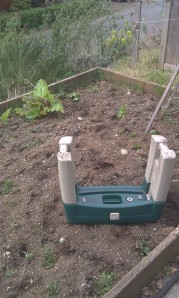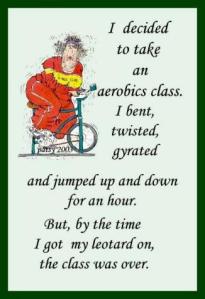I keep advising you to eat lots of Swiss chard, collard greens, kale, mustard greens and you say, but I don’t like greens. Greens are one of the best foods for arthritic joints and arthritis in general. They provide minerals and help with inflammation. It is possible to cook them so they are delicious.
Dark green leafy vegetables are, calorie for calorie, probably the most concentrated source of nutrition of any food. They are a rich source of minerals (including iron, calcium, potassium, and magnesium) and vitamins, including vitamins K, C, E, and many of the B vitamins. They also provide a variety of phytonutrients including beta-carotene, lutein, and zeaxanthin, which protect our cells from damage and our eyes from age-related problems, among many other effects. Dark green leaves even contain small amounts of Omega-3 fats. All of these nutrients help with reducing pain, especially joint pain.
Perhaps the star of these nutrients is Vitamin K. A cup of most cooked greens provides at least nine times the minimum recommended intake of Vitamin K, and even a couple of cups of dark salad greens usually provide the minimum all on their own. Recent research has provided evidence that this vitamin may be even more important than we once thought (the current minimum may not be optimal), and many people do not get enough of it.
Our ancestors ate a grocery bag full of green leaves every day. We won’t do that, but I can tell you that I buy a bunch of any of these greens from my health food grocery store and eat the whole bunch in one sitting, or divide it in two meals if I have other vegetables on the menu. Once you develop a taste for greens, you’ll want them 5 days a week.
Here’s a quick and easy way to prepare a delicious one dish meal with collards.
1. put the skillet on the stove with 2 tbls olive oil
2. slice half an onion into the oil (use a spatter lid)
3. slice a lean sausage into the oil (this is unnecessary if you have a meat/fish item for the meal.) I like to use sausage because it makes it a one dish. I buy lean organic chicken, lamb or turkey sausage and have them in the freezer for just such an occasion. No need to defrost. Just slice with your strongest knife and put in the skillet with the onions.
4. take 3 large collard leaves and pull the green away from the stems.
5. slice a zucchini or summer squash into ½ inch rounds (if you have them)
6. Place green and zucchini on top of onions, and sausage, add a sprinkle of salt, put a tight fitting lid on and turn the burner down to medium low for 5 minutes.
Before you rush to the store, take a minute to tell us what your favorite way of preparing and eating greens is. Go ahead, help us out. We want less arthritis pain, fewer medications and greater mobility, so share you’re “greens” story.
You say you will never get enough of this stuff to help your aching body? Then click right over to the Shaklee shopping page and browse for Alfalfa tablets, Carotomax, Flavomax, Omega Guard, B Complex, Vita – C. The foundation product is Vitalizer which contains all these nutritents. For people who don’t have time to cook and want to eat like our ancestors.
Fondly, Betsy
Be Well, Do Well and Keep Moving
BetsyBell’s Health4u
206 933 1889 1 888 283 2077
betsy@hihohealth.com





